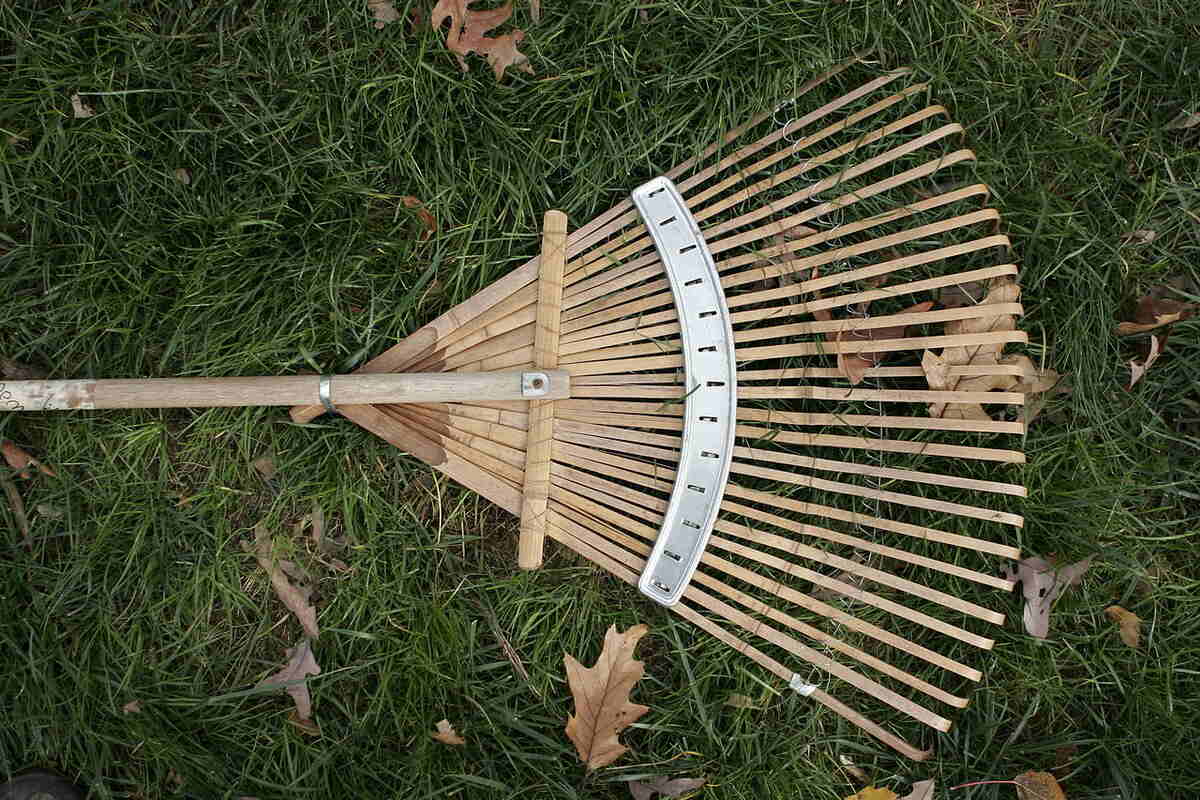
Have you ever attended a fancy dinner and not known which fork to use? That’s how it might feel when you’re shopping for a rake at the home supply store. Like forks, rakes serve very different purposes. From garden rakes to scoop rakes, there are many styles to choose from. Read on for a look at these 12 different types of rakes and their uses.
Check out some of the best rakes from Lawnstarter’s articles:
A Brief History of Rakes
While rake designs and materials have evolved, the basic construction remains the same. Implements found in China, consisting of wood tines attached to a head, date back to 1100 B.C.
According to Atlas Obscura, in 1874, Edmund Brown patented a rake that included its own cleaning device. In 1905, a combination rake/snow scoop was patented. The more-familiar design arrived in the late 1920s, and the current molded plastic rake arrived in the mid-1970s.
What to Look For in a Rake
Besides purpose, size and material are important considerations when choosing any rake. Most long-handled rakes are between 22 and 30 inches in length. As for materials, consider what is comfortable for you, and what best suits your purposes.
- Wood: You’ll likely find wooden handles used in rakes, but a wooden leaf rake usually is made of bamboo.
- Plastic: Generally used for rake heads and tines, plastic is ideal for situations in which you want a flexible, lightweight tool.
- Metal: The most durable material for both rake heads and handles, it can take on jobs other materials can’t.
- Fiberglass: Generally, this is a combo rake with a fiberglass handle attached to a steel head and tines. A fiberglass handle is lightweight and more durable than wood.
Types of Rakes
So what kind of rake do you need for your tasks? Take a look at some of the most common rake types available.
1. Garden Rake

AKA: Bow rake, level head rake
What it looks like: Metal tines are short, thick and widely spaced, extending from a long handle.
Primarily used for leveling dirt and mulch, a quality garden rake is a necessary lawn care tool for any homeowner. Its sturdy metal head and short tines are good for raking up the garden bed or aerating soil.
However, a garden rake is not a good choice for raking piles of leaves. The tines are made to dig into dirt and could damage the grass. Also, this heavyweight tool could make leaf-raking tough on your arms and back.
2. Leaf Rake
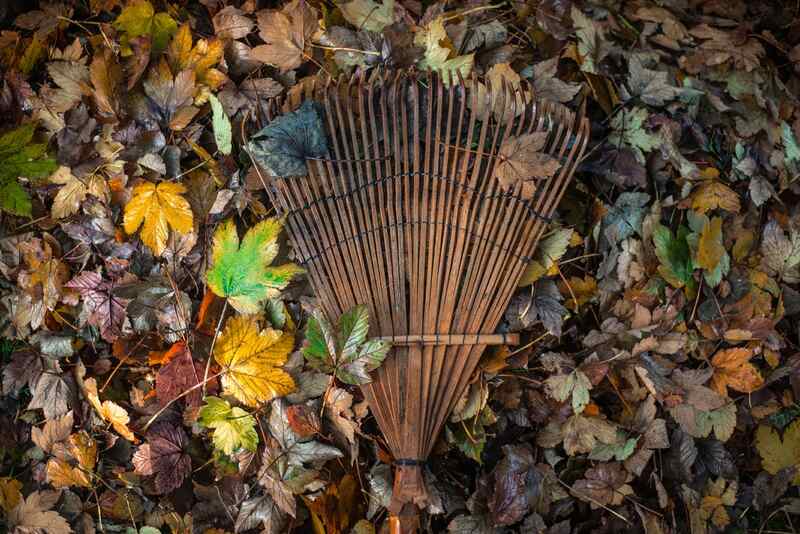
AKA: Lawn rake
What it looks like: A long handle with metal, bamboo, or plastic tines spread out in a triangular shape.
Primarily used for gathering fallen leaves, this is another must-have for most homeowners. Your choice of a leaf rake centers on materials and size:
- Plastic rakes are lightweight, won’t rust, and generally are the least expensive. But they are the least durable. However, polyresin rakes may be a good compromise as they offer durability and flexibility.
- Metal rakes are the most durable yard rake, but can be heavy and hard to clean up. However, aluminum rakes are the exception in the weight department.
- Bamboo rakes are lightweight and sustainable. However, they aren’t the most durable.
Size matters: The right rake size will make the difference between a quick leaf-raking job and a long slog. (Not to mention the backache that will follow.) Make sure the handle is long enough that you don’t have to stoop. When shopping, consider an ergonomic lawn rake with a telescoping handle if several family members are going to use it.
A wide fan clears more leaves with each pass, which is good for a large area. But a long, wide-fan rake can get heavy and take more muscle to control.
3. Shrub Rake
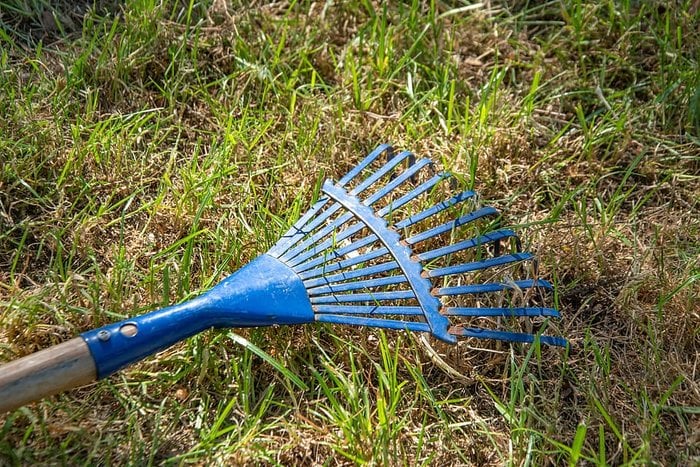
What it looks like: Tines are typically in a fan shape and span less than 10 inches; some varieties are shaped like a house broom.
A shrub rake may look like a miniature leaf rake, but it’s made to work in tight spaces. A shrub rake is the tool to use when removing leaves and debris from between shrubs, along fence lines, and from flower beds. If your garden has a lot of debris, look for thicker tines, as this will more effectively remove the unwanted matter.
4. Thatch Rake

AKA: Scarifying rake, dethatching rake
What it looks like: This rake has a long handle, with sharp metal blades lining both sides of the wide metal head.
Dethatching, which is removing the build up of dead grass and other organic material between the grass and the soil, is important for a healthy lawn. Dethatching can be done with a manual rake or a machine. For small jobs, a rake will do. For large spaces or heavy thatch, it might be best to look into a power rake or a vertical mower.
How does a thatch rake work? One side of this specialty rake breaks up the thatch, while the other side removes it. To use, position the blades so they rest just under the surface of the grass, then pull the rake toward you. Use caution: Thatch rake blades are sharp.
5. Landscape Rake
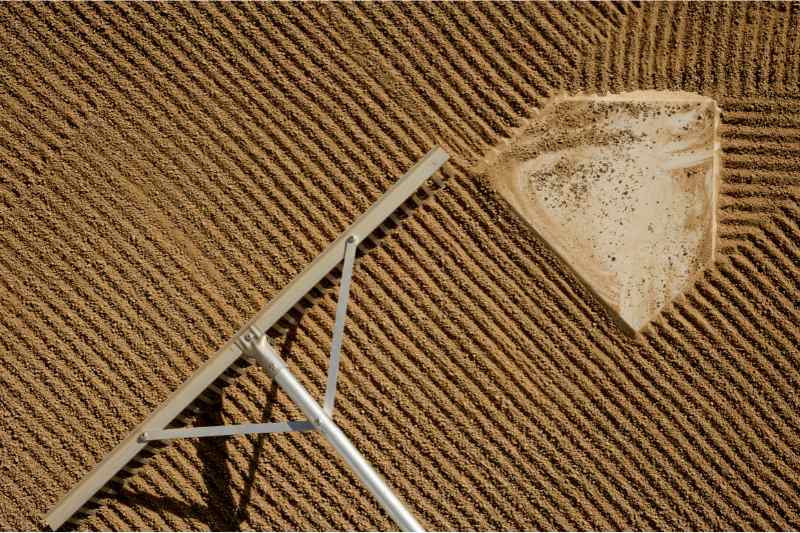
What it looks like: Similar in shape to a garden rake, a landscape rake has a wide head and lots of steel tines.
Landscape rakes can be confused with garden rakes, but you’re more likely to see them used by a pro groundskeeper. Their wide heads — up to 38 inches wide — are designed for bigger jobs, such as smoothing out the infield on a baseball diamond or leveling out small areas of dirt or sand. While the heads are usually made of aluminum, they can be tough to maneuver.
6. Hand Rake

What it looks like: A scaled-down rake, with a short handle and usually three tines with a pronounced bent.
Similar in size to a trowel, a hand rake is best for precise, detailed work. Use it to till soil, remove debris and pull weeds in flower beds. It also works well to break up the soil in pots before you plant a container garden.
Specialty Rakes
Some out-of-the-ordinary jobs may require a special type of rake:
1. Leaf Scoop Rake

A great solution if you can’t get the kids to rake. These come in a couple of configurations:
- A rake with a clamshell head that operates with a lever
- A set of plastic scoops that look like overgrown lobster claws
Both allow you to move and pick up the leaves in one motion, making it very easy to fill a waste bin or wheelbarrow.
2. Lake Rake

If you have a pond or water garden, you know that algae can cut off needed oxygen for plants and fish. This is where a lake rake comes in handy. These look like landscape rakes and come with short or long handles. To use, drag it along the surface of the water to pull out algae or other debris that can land in your pond.
3. Roof Rake

While snow on a roof looks picturesque, too much of it can damage or cave in your roof. So, in high-snow areas, a roof rake is a necessity. This rake has a slightly curved blade attached to a telescoping handle that reaches around 15 feet. It’s also handy for removing leaves and other debris from your roof or fetching the neighbor kid’s flying disc.
4. Berry Rake
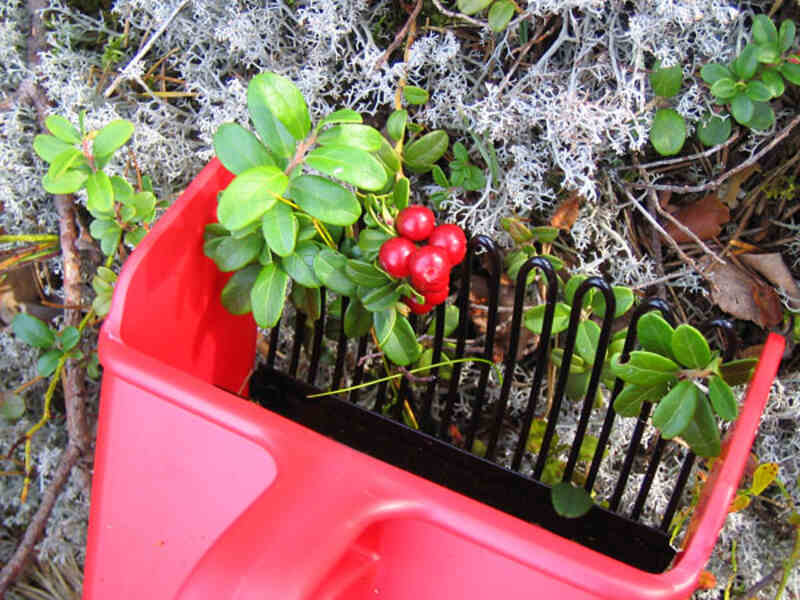
Growing your own berries has its rewards, but picking may not be one of them. A berry rake can make the job easier. Made of metal or plastic, this rake looks like a box with a comb on the end. Use it to gently pull berries, which fall into the box. This saves you time and the mess of fallen berries.
5. Tarmac Rake
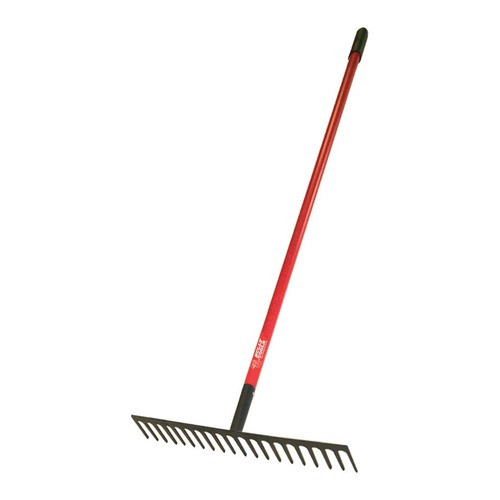
Also known as an asphalt rake, stone rake, or gravel rake, tarmac rakes are confused with garden rakes, and they could be used to level garden soil. But these metal rakes are made for heavy-duty jobs, like moving and smoothing out asphalt and gravel. If you plan to install a gravel or asphalt driveway, this is the type of tool you’ll need, among others.
6. Artificial Turf Rake-Brush

Artificial turf, commonly referred to as artificial grass, has gained popularity among homeowners due to its low-maintenance appeal. Unlike natural grass, this instant lawn does not require mowing, watering, fertilizers, or pesticides. Therefore, it looks great all year round and can be maintained using an artificial grass rake-brush designed specifically for artificial turf.
FAQ
What’s the Best Way to Store Rakes?
To preserve your rakes and prevent injury, the best practice is to hang them up when not in use. Storage can consist of a tool organizer attached to a wall in your garage, basement, or storage shed.
Do I Need to Clean my Rake at the End of the Season?
Just like power tools, hand garden tools like rakes need maintenance to preserve them. One way to clean up a rake is to wrap the tines in newspaper, then soak the paper with white distilled vinegar and let it remain overnight. In the morning, rinse and dry with a soft cloth.
How Can I Tell if a Rake is the Correct Size?
To choose the right-size rake for you, place the rake handle against the floor and see where the head hits. If it hits the bridge of your nose, it’s the proper length and should feel balanced while you’re doing yard work.
When to Call in the Pros
With so many rakes available, it can be confusing to figure out which one to use for specific tasks. Or there may be times you don’t want to, or can’t, rake the leaves or maintain the garden. In that case, consider calling a professional leaf removal service. Your local pros can take care of those leaves or keep your garden bed in top shape.
Main Image Credit: Henry Tseng / Wikimedia Commons / CC BY-2.0